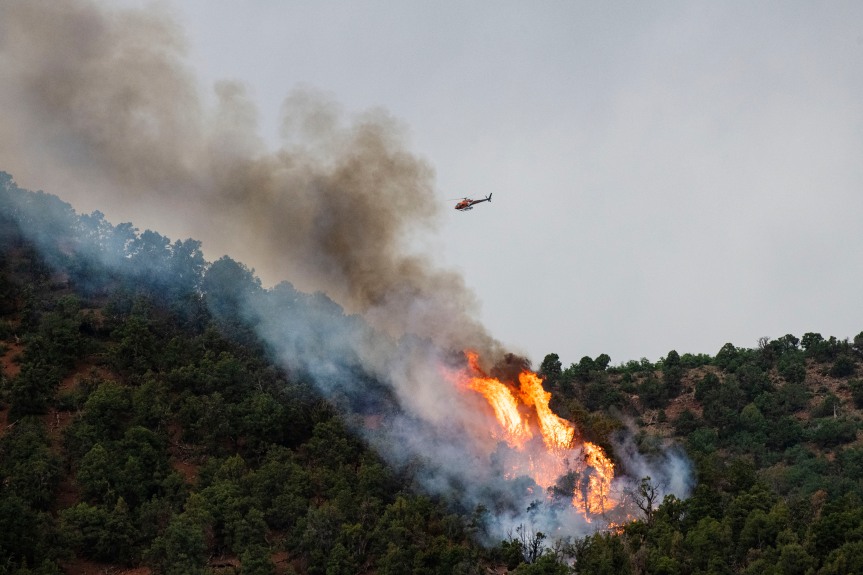Natural Disasters Negatively Impact Families Across the US
January 11, 2022
Although many families have had the opportunity and the privilege to celebrate the holidays safely with their families, others were not so lucky. The occurrence of multiple natural disasters impacted families over the holidays and left many without their homes and forced evacuation.
The first occurred late Friday night, Dec. 10, to early Saturday morning, Dec. 11, when a series of tornadoes touched down across six different states, including Kentucky, Arkansas, Illinois, Missouri, Tennessee, and Mississippi, leaving at least 88 dead, dozens missing, and many injured. Tennessee alone had a sum of 24 tornados, 10 tornadoes reported in West Tennessee and 14 in Middle Tennessee.
According to USA Today, Kentucky had a total of 77 deaths, which marks it as one of the deadliest tornadoes in the state’s history. President Biden flew into Kenutcky to help assess the damage, and has officially declared a state of federal emergency for Kentucky.
A large amount of damage was caused by the series of tornadoes and many buildings were destroyed. Some of these places include: a candle factory in Kentucky, an Amazon warehouse in Illinois, and a nursing home in Arkansas. Many homes and an entire town-Mayfield-in Kentucky was devastated by a EF-4 tornado, the second most intense tornado on the Enhanced Fujita Scale, a system that rates the intensity of tornadoes.
In a New York Times article it states, “Early estimates of damage and economic losses have ranged into the billions. Corelogic, a property information and analytics company, estimated that nearly 15,000 structures were damaged or destroyed throughout the storms’ path, at a cost of $3.7 billion.”
Nobody is quite sure how this happened or what exactly causes this string of tornadoes, or if climate change has something to do with it.
In a New York Times article it states, “Scientists are not sure whether there is a link between climate change and the frequency or strength of tornadoes, in part because of limited data. But researchers say that in recent years tornadoes seem to be occurring in greater ‘clusters,’ and that a so-called tornado alley in the Great Plains — where most tornadoes occur — appears to be shifting eastward.”
Another natural phenomenon that has recently occurred was a herd of wildfires that made their way through Colorado, starting on Thursday morning, Dec. 30.
The fires began quickly and spread fast, destroying over 1,000 homes and burning around 6,200 acres of land. Among the damaged, a shopping complex and hotel were also impacted. No one has been declared dead or majorly injured, but two others have been declared missing.
In a New York Times article it states, “The wildfires came unusually late in the year for Colorado, where severe drought conditions in recent months have set the stage for such blazes to spread with ease.”
The article also talks about how Governor Jared Polis declared a state of emergency on Thursday and how the state will be able to access emergency funds and the Colorado National Guard.
These wildfires were devastating, but Colorado has also recently dealt with other national occurrences.
Around Dec. 15, a storm system generated dust clouds near the city of Pueblo. Almost two weeks later, winds up to 110 miles per hour appeared, which ultimately helped the wildfires expand. The same New York Times article says, “Just two days after they fled a firestorm, many residents on Saturday slogged back through snow to their damaged homes. Nearly a foot of snow and single-digit temperatures added new items to their list of woes: frozen pipes and water damage.”
Colorado authorities have said that it will take years to rebuild the damage caused by the wildfires, but on Friday, Jan. 7, President Biden plans to fly to Colorado to help assess the situation.
